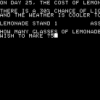hi.
for a long time i was searching for a good way to write gdd but after a while i think gdd is not the most important part.
as i am the only technical and programer in my team i know what my imagination will be and as i know most of the people in the forum are indie.
and as indie developer you have not much exprience and you just test your ideas that is this possible or not.
so most of the time a fixed design maybe doesnt work.
and even after writing first gdd you find that there is an idea that can be added to your game. but even the way i chose i think it has a big problem.
first one is when endup the obssesion of your new ideas? when you reached the timeline?(for example in interview of cod:ghosts mark rubin said: dog gameplay wasnt in our main design and after watching a documentry we added that gameplay) but how they could controll that for a timeline or how they could be sure that should be great? or end your design when a good tester sais thats enough for this game?
the next problem is most of the time your idea is amazing but (i dont know what you call it) its not a cooked idea and you cant implement it fun. how you should behave that? put it aside for another game and maybe another tools or engine or continue working on it untill it is good enough even if it takes much time.
sorry for my bad english.








